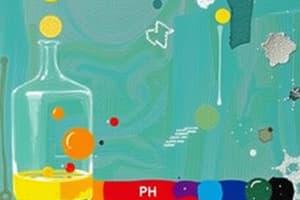Podcast
Questions and Answers
What is the smallest unit of biological organization that retains the characteristics of life?
What is the smallest unit of biological organization that retains the characteristics of life?
- Atom
- Molecule
- Cell (correct)
- Organism
What forms the basic hierarchical organization of living organisms?
What forms the basic hierarchical organization of living organisms?
- Non-living building blocks (correct)
- Multicellular structures
- Complex tissues
- Single-celled organisms
What are the highly-organized assemblies of non-living molecules that make up cells?
What are the highly-organized assemblies of non-living molecules that make up cells?
- Chemicals (correct)
- Tissues
- Genes
- Cells
In the context of biological organization, which level is immediately lower than that of a cell?
In the context of biological organization, which level is immediately lower than that of a cell?
What aspect makes the composition of life unique compared to non-living matter?
What aspect makes the composition of life unique compared to non-living matter?
Which of the following atoms would you find in a significant component of living organisms?
Which of the following atoms would you find in a significant component of living organisms?
What percentage of the composition of the human body is attributed to carbon?
What percentage of the composition of the human body is attributed to carbon?
The composition of life is primarily made up of which type of elements?
The composition of life is primarily made up of which type of elements?
What happens to an excited-state electron after it becomes unstable?
What happens to an excited-state electron after it becomes unstable?
What is the significance of the electron configuration in an atom?
What is the significance of the electron configuration in an atom?
Why can't the exact position of an electron be determined at a given moment?
Why can't the exact position of an electron be determined at a given moment?
What are the types of chemical bonds primarily discussed as forming molecules?
What are the types of chemical bonds primarily discussed as forming molecules?
What occurs when two atoms form a chemical bond?
What occurs when two atoms form a chemical bond?
What does the pH scale primarily reflect?
What does the pH scale primarily reflect?
In an ionic bond, what charge does the atom that donates an electron acquire?
In an ionic bond, what charge does the atom that donates an electron acquire?
What type of atoms typically participate in ionic bonding?
What type of atoms typically participate in ionic bonding?
What do acids do to biological molecules?
What do acids do to biological molecules?
Why is carbon such an essential element for life?
Why is carbon such an essential element for life?
What role do subshells play in an atom's structure?
What role do subshells play in an atom's structure?
What characterizes organic molecules in relation to carbon?
What characterizes organic molecules in relation to carbon?
What impact do strong acids and bases have on biological molecules?
What impact do strong acids and bases have on biological molecules?
What is the significance of the four bonding positions of a carbon atom?
What is the significance of the four bonding positions of a carbon atom?
What is the main role of functional groups in organic molecules?
What is the main role of functional groups in organic molecules?
What distinguishes macromolecules from smaller organic molecules?
What distinguishes macromolecules from smaller organic molecules?
What subatomic particles are found in the nucleus of an atom?
What subatomic particles are found in the nucleus of an atom?
Which of the following accurately describes isotopes?
Which of the following accurately describes isotopes?
How do electrons fill the electron shells in an atom?
How do electrons fill the electron shells in an atom?
What is the purpose of unstable isotopes in geology and archaeology?
What is the purpose of unstable isotopes in geology and archaeology?
Which statement about the model of the atom developed by Niels Bohr is incorrect?
Which statement about the model of the atom developed by Niels Bohr is incorrect?
What happens to an electron when it absorbs a photon of light energy?
What happens to an electron when it absorbs a photon of light energy?
What primarily defines the nature of a polar covalent bond?
What primarily defines the nature of a polar covalent bond?
Which statement about water's properties is NOT true?
Which statement about water's properties is NOT true?
Why are some isotopes considered unstable?
Why are some isotopes considered unstable?
How do covalent bonds contribute to a molecule's shape?
How do covalent bonds contribute to a molecule's shape?
Which of the following elements would typically have six protons and seven neutrons?
Which of the following elements would typically have six protons and seven neutrons?
What occurs when table salt (NaCl) dissolves in water?
What occurs when table salt (NaCl) dissolves in water?
Which of the following best explains why water has strong surface tension?
Which of the following best explains why water has strong surface tension?
Which characteristic of water contributes to its role as a solvent for polar molecules?
Which characteristic of water contributes to its role as a solvent for polar molecules?
Why is the unique property of ice being less dense than liquid water crucial for life?
Why is the unique property of ice being less dense than liquid water crucial for life?
Which factor best describes electronegativity in the context of covalent bonds?
Which factor best describes electronegativity in the context of covalent bonds?
Flashcards are hidden until you start studying
Study Notes
Properties of Water and the pH Scale
- pH scale measures hydrogen ion (H+) concentration in solutions.
- Acids possess high H+ ion concentrations, affecting biological molecules like proteins and lipids.
- Bases have low H+ concentrations and can remove H+ ions from biological molecules.
- Alteration of biological molecules occurs when exposed to strong acids/bases.
Importance of Carbon in Organic Chemistry
- Carbon is the second most abundant element in living organisms, crucial for life's molecular structure.
- A carbon atom needs four valence electrons, leading to the formation of four covalent bonds.
- Organic molecules consist of carbon chains and various functional groups influencing their functions.
Structure of Macromolecules
- Long carbon chains form diverse organic macromolecules contributing to structural and functional versatility.
- Recognizing functional groups aids in understanding molecular behavior and properties.
Biological Organization
- Living organisms exhibit a hierarchical structure starting from non-living components.
- Cells are the fundamental units of biological organization, capable of sustaining life's characteristics.
Composition of Life
- Cells comprise organized assemblies of non-living molecules containing various atoms (e.g., C, O, N, H).
- Differences in elemental composition exist between living organisms and non-living matter.
Atomic Structure Overview
- Atoms consist of a nucleus containing protons and neutrons, surrounded by electrons in shells.
- Isotopes vary in neutron numbers, affecting stability and allowing for applications in dating and energy generation.
Chemical Bonds
- Atoms form molecules through chemical bonds that stabilize their valence shells.
- Ionic bonds arise from electron transfer between metals and nonmetals, creating cations and anions.
- Covalent bonds occur through the sharing of electron pairs, helping achieve stable configurations.
Electronegativity and Molecular Polarity
- Electronegativity refers to an atom’s affinity for shared electrons; larger atoms are generally more electronegative.
- The molecular structure determines polarity; polar molecules interact better with other polar substances.
Properties of Water
- Water is less dense in its solid state (ice) compared to liquid, vital for aquatic ecosystems.
- Serves as an excellent solvent for polar molecules and ions, facilitating biochemical reactions.
- Cohesion contributes to high surface tension, while adhesion aids in capillary action, promoting nutrient transport in plants.
- Water has a high specific heat, stabilizing environmental temperatures essential for life.
Solutions and Dissolution
- Dissolution involves solute particles dispersing in a solvent; e.g., NaCl dissociates into Na+ and Cl- in water.
- Solubility patterns differ; polar solutes like sugar dissolve differently than ionic compounds due to their distinct interactions with water molecules.
Studying That Suits You
Use AI to generate personalized quizzes and flashcards to suit your learning preferences.




